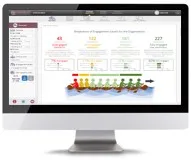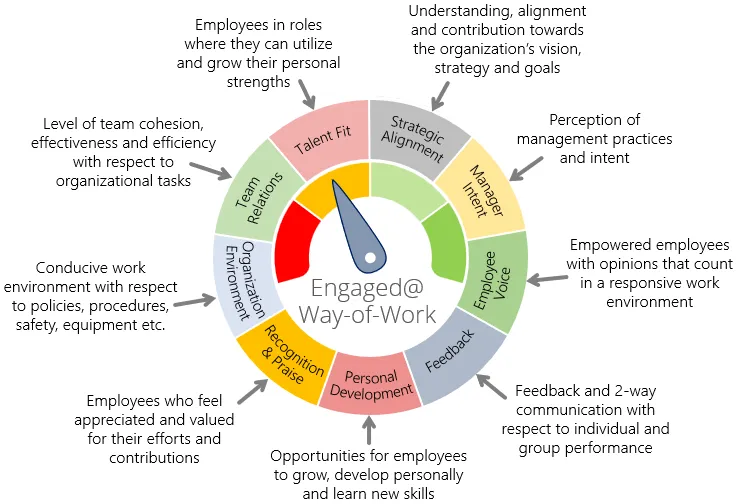
Flow@Work Engagement Survey
Scientifically designed and statistically validated employee engagement survey
Mindset's Flow@Work and Engaged@Way-of-Work engagement surveys and the Engage EX platform will help you to embed engagement as your organisation's way-of-life.
Accurately diagnose the issues that inhibit or drive engagement at organizational, business unit or team level, with advanced demographic analysis, and compare your business unit's engagement results against previous engagement surveys and benchmark scores. Mindset's engagement surveys measure both the engagement levels in your organization (how engaged your employees are) and the factors that inhibit or drive engagement at business unit and demographic level so you know where to focus and what needs fixing.
 |
Demo version of the full engagement analytics dashboard (desktop only) |
Click here for more information about the Flow@Work and Engaged@Way-of-Work engagement models and theoretical context.
Measuring the Indicators of Engagement & Wellbeing
The Flow@Work and Engaged@Way-of-Work engagement models define engagement as employees who are emotionally committed to the organisation and who are willing to translate this commitment into discretionary effort. The levels of engagement in an organization or business unit are therefore measured with respect to these two indicator dimensions:
Indicator #1: the employees' commitment to the organization, its leadership and it values; and
- Indicator #2: their willingness to go above and beyond what is expected of them (discretionary effort) to help the organisation meets its objectives.
The business unit or team's survey scores for both the Commitment and Willingness indicator dimensions are used in combination as the basis to calculate their engagement levels, and are plotted on a 2-axis graph for maximum visual impact:
- Fully engaged (star performers) – highly committed and loyal employees who add value to the organization and who are prepared to do more than what is required of them (score > ±80 for both indicators);
- Engaged (key contributors) – reliable employees who do what is expected of them but are at times inclined to be complacent and risk averse (score > ±65 for both indicators);
- Not engaged (passengers) – indifferent and frustrated employees with low levels of energy who resist change and who generally do only the minimum to get by (score > ±50 for both indicators); and
- Disengaged (derailers) – dissatisfied and unhappy employees with a negative influence on their colleagues and who are most likely looking for another job (score < ±50 for either of the indicators).
Click here for more information and an example of how engagement levels are calculated.
|
Book a free, no-obligation online demo of the Engage EX platform |
|
Contact us for more information or a quote for a turnkey solution |
Understanding the Drivers of Employee Engagement & Wellbeing
Mindset’s validated Flow@Work and Engaged@Way-of-Work engagement models measure the aspects in the work environment that have a direct impact on the levels of engagement in the organization. We achieve this by grouping employee feedback into 9 scientifically researched dimensions or drivers – covering from strategic-level insights to management practices and talent fit on an individual employee level. Engaged@Way-of-Work, the Wellbeing version of Flow@Work, includes an additional Resilience & Change Readiness driver that will provide you with critical insights into the challenges your employees face while adapting to the post-COVID new way of work.


